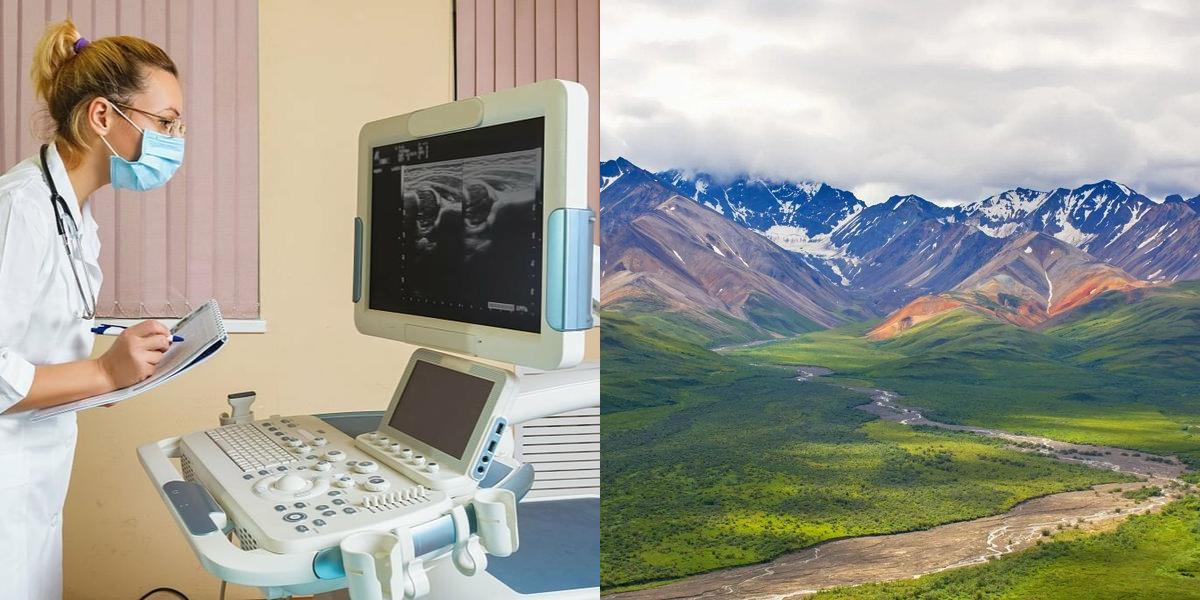What is a Diagnostic Medical Sonographer?
A Diagnostic Medical Sonographer, also known as an ultrasound technician, is a healthcare professional who uses specialized equipment to create images of a patient's internal organs and structures. These images are then used by physicians to diagnose medical conditions and guide treatment plans.
The responsibilities of a Diagnostic Medical Sonographer include:
-
Operating ultrasound equipment and ensuring its proper functionality.
-
Preparing patients for procedures and explaining the process.
-
Positioning patients correctly to obtain accurate images.
-
Analyzing images and identifying any abnormalities or areas of concern.
-
Collaborating with physicians to provide accurate and timely diagnoses.
Where does a Diagnostic Medical Sonographer work?
Diagnostic Medical Sonographers work in various healthcare settings, including:
-
Hospitals: Sonographers may work in different departments within a hospital, such as radiology, obstetrics/gynecology, cardiology, and emergency medicine.
-
Imaging Centers: These specialized facilities focus on diagnostic imaging services, including ultrasound.
-
Physicians' Offices: Some doctors have ultrasound equipment in their offices, allowing for immediate imaging and diagnosis.
-
Mobile Services: Sonographers may travel to different locations, such as nursing homes or home healthcare settings, to perform ultrasounds on patients who cannot visit a healthcare facility.
How to Become a Medical Sonographer in Alaska?
To become a medical sonographer in Alaska, one must first complete an accredited ultrasound technician program, earning an associate's or bachelor's degree. Next, they must obtain certification from the American Registry for Diagnostic Medical Sonography (ARDMS) or the American Registry of Radiologic Technologists (ARRT). Once certified, they can search for job opportunities in hospitals, clinics, and private practices to start earning a competitive salary.
What are the requirements to become a Diagnostic Medical Sonographer in Alaska?
To become a Diagnostic Medical Sonographer in Alaska, you need to fulfill certain education and legal requirements. These include:
-
Education: Completion of an accredited Diagnostic Medical Sonography program is required. These programs typically result in an associate's or bachelor's degree and provide a combination of classroom instruction and clinical experience.
-
Certification: While certification is not legally required in Alaska, it is highly recommended for better job prospects. The American Registry for Diagnostic Medical Sonography (ARDMS) offers certification exams in various specialties, such as abdomen, obstetrics/gynecology, and vascular technology.
-
Licensure: Alaska does not require a state-specific license for Diagnostic Medical Sonographers. However, some employers may prefer candidates who hold an active certification from a recognized organization.
Where can I find Diagnostic Medical Sonographer classes in Alaska?
If you're looking to pursue a career as a Diagnostic Medical Sonographer in Alaska, Dreambound is the largest platform for students to find and compare vocational training programs. Dreambound offers a comprehensive directory of schools and classes specifically for Diagnostic Medical Sonography in Alaska. By using Dreambound's platform, you can easily find and compare different programs, explore their requirements, and make an informed decision about your education and career path.
Dreambound can help you find Diagnostic Medical Sonographer classes near you, ensuring that you have access to the best educational opportunities and resources in Alaska.
How do I get my Diagnostic Medical Sonographer certification?
Becoming a Diagnostic Medical Sonographer, also known as an ultrasound technician, is an exciting and rewarding career choice. This field offers a unique opportunity to work closely with patients and use advanced technology to produce images that help diagnose and treat medical conditions. If you're interested in pursuing a career as a Diagnostic Medical Sonographer, here are the steps you'll need to take to get your certification.
1. Complete your education: Begin by earning at least an associate's degree in Diagnostic Medical Sonography from a college, university, or vocational school. These programs cover anatomy, physiology, ultrasound technology, patient care, and medical ethics. Hands-on experience in clinical rotations under experienced sonographers is also part of your education.
2.Gain clinical experience: After completing your educational program, gain practical experience through internships or externships in healthcare settings. Working under supervision, you'll perform ultrasound procedures, interact with patients, and refine your skills in real-world scenarios.
3. Take the certification exam: Once you've fulfilled the educational and clinical requirements, you're eligible to take the certification exam administered by the American Registry for Diagnostic Medical Sonography (ARDMS). This involves passing the Sonography Principles & Instrumentation (SPI) exam, followed by a specialty exam in your chosen area of sonography such as abdominal, breast, or obstetrics and gynecology.
4. Continue your professional development: After becoming certified, stay current with advancements in the field through continuing education. Attend workshops, conferences, and online courses to expand your knowledge and skills. Continuing education not only helps maintain your certification but also enhances your expertise as a Diagnostic Medical Sonographer.
How do I get a job as a Diagnostic Medical Sonographer?
Once you have obtained your certification as a Diagnostic Medical Sonographer, you will be qualified to seek employment in a variety of healthcare settings. Here are the steps you can take to land a job as a Diagnostic Medical Sonographer.
1. Prepare your resume and cover letter: Before you start applying for jobs, it is important to have a well-prepared resume and cover letter. Your resume should highlight your education, clinical experience, certification, and any relevant skills or achievements. Your cover letter should be tailored to each specific job application and should explain why you are interested in the position and what you can bring to the table.
2. Network in the field: Networking is an important part of any job search, and it can be especially beneficial in the healthcare industry. Reach out to professionals in the field, attend industry events, and join professional organizations. Networking can lead to job opportunities, as well as valuable advice and guidance from experienced sonographers.
3. Apply for jobs: Once you have prepared your resume, cover letter, and have established a network, it's time to start applying for jobs. Look for job openings at hospitals, clinics, imaging centers, and other healthcare facilities. You can also consider joining a staffing agency that specializes in placing Diagnostic Medical Sonographers. These agencies can help connect you with job opportunities and provide support throughout the hiring process.
4. Prepare for interviews: If your application is successful, you will likely be invited for an interview. It is important to prepare for these interviews by researching the company, practicing common interview questions, and preparing examples of how your skills and experience make you a good fit for the position. Dress professionally, arrive on time, and be prepared to answer questions about your education, clinical experience, and certification.
5. Gain experience: If you are having difficulty finding a job as a Diagnostic Medical Sonographer, consider gaining additional experience through volunteer work or internships. This can help you build your resume and gain valuable experience in the field. You may also consider applying for entry-level positions or positions in rural or underserved areas, where there may be more opportunities available.
Career Paths and Opportunities after Becoming a Diagnostic Medical Sonographer
After becoming a certified Diagnostic Medical Sonographer, there are a variety of career paths and opportunities available to you. Here are some of the options you can consider:
-
Hospitals and Clinics: Many Diagnostic Medical Sonographers work in hospitals and clinics, where they perform ultrasound procedures on patients. In these settings, you may work in various departments, such as radiology, obstetrics and gynecology, cardiology, or vascular. Working in a hospital or clinic allows you to work with a diverse patient population and gain experience in different specialties.
-
Private Practice: Some Diagnostic Medical Sonographers choose to work in private practice settings, either independently or as part of a group practice. In a private practice, you may have more autonomy and flexibility in your work schedule. You may also have the opportunity to specialize in a specific area of sonography, such as breast or vascular.
-
Imaging Centers: Imaging centers specialize in diagnostic imaging, including ultrasound. These centers often offer a wide range of imaging services, and as a Diagnostic Medical Sonographer, you may have the opportunity to work with advanced imaging technology. Imaging centers can be a great option if you enjoy a fast-paced work environment and working with cutting-edge technology.
-
Education and Research: If you have a passion for teaching or research, you may consider a career in education or research. Many colleges and universities offer programs in Diagnostic Medical Sonography, and they may have opportunities for faculty positions or research positions. Working in education or research allows you to contribute to the advancement of the field and shape the next generation of sonographers.
-
Travel Opportunities: As a certified Diagnostic Medical Sonographer, you may have the opportunity to work as a travel sonographer. Travel sonographers are hired on a temporary basis to work in different healthcare facilities across the country. This allows you to explore different locations, gain experience in different settings, and enjoy the flexibility and adventure of travel.





